Most spiders that enter our homes are harmless, but a select few species can pose significant health risks. Knowing how to identify potentially dangerous arachnids is an invaluable skill for any homeowner. While spider bites are relatively rare, and fatalities even rarer, properly identifying venomous species can help you make informed decisions about when to exercise caution and when professional intervention might be necessary. This guide will walk you through the key characteristics, behaviors, and habitats of common venomous spiders you might encounter, providing you with the knowledge to protect yourself and your family.
Understanding Spider Anatomy

Before diving into specific venomous species, it’s helpful to understand basic spider anatomy to aid in identification. All spiders have two main body parts: the cephalothorax (head and thorax combined) and the abdomen. They have eight legs, typically two or more eyes, and specialized mouthparts called chelicerae that contain venom glands and fangs. When identifying potentially dangerous spiders, pay particular attention to body shape, leg structure, distinctive markings, and web patterns. The size and coloration of spiders can vary significantly even within the same species, so it’s important to look for multiple identifying features rather than relying on a single characteristic.
Black Widow Spiders
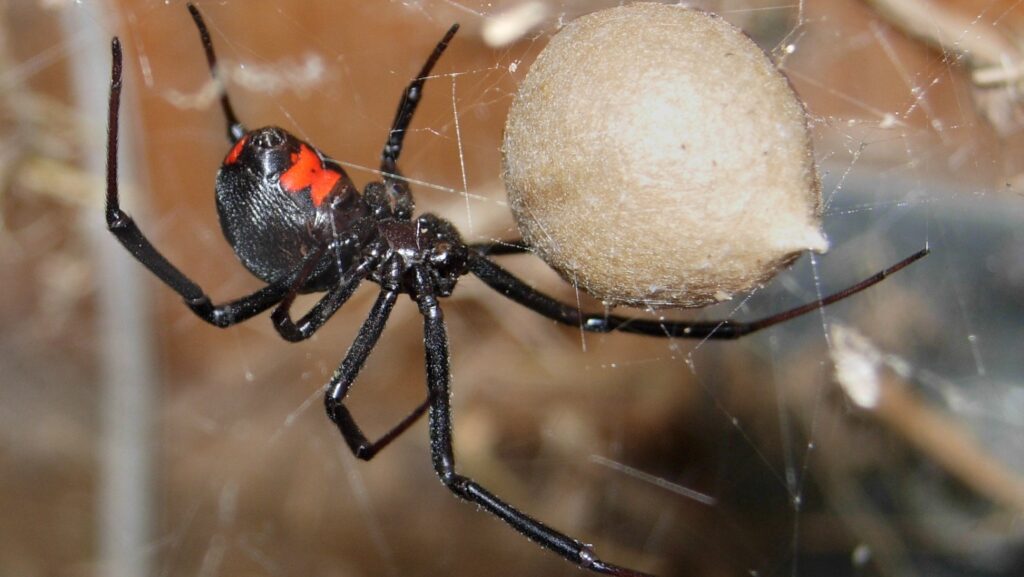
Black widow spiders (Latrodectus species) are among the most recognizable and dangerous spiders in North America. Female black widows are glossy black with a distinctive red hourglass-shaped marking on the underside of their abdomen, though this marking may sometimes appear as separate red spots. They typically measure about 1.5 inches long including their legs, with females being significantly larger than males. Black widows create irregular, tangled cobwebs in dark, undisturbed areas such as woodpiles, under eaves, in cluttered garages, or around outdoor furniture. Their venom is neurotoxic and can cause severe pain, muscle cramping, and in rare cases, more serious symptoms requiring medical attention.
Brown Recluse Spiders

The brown recluse spider (Loxosceles reclusa) is identifiable by its violin-shaped marking on the top of its cephalothorax, earning it the nickname “fiddle-back.” Unlike most spiders that have eight eyes, brown recluse spiders have six eyes arranged in pairs, though this feature is difficult to observe without magnification. Their body color ranges from light tan to dark brown, and they measure about 1/4 to 1/2 inch in body length. Brown recluses prefer undisturbed areas like closets, attics, and storage spaces, and they don’t build elaborate webs but rather irregular ones that resemble cotton candy. Their bite can cause necrotic lesions (dead tissue) that may take months to heal and can leave significant scarring.
Hobo Spiders
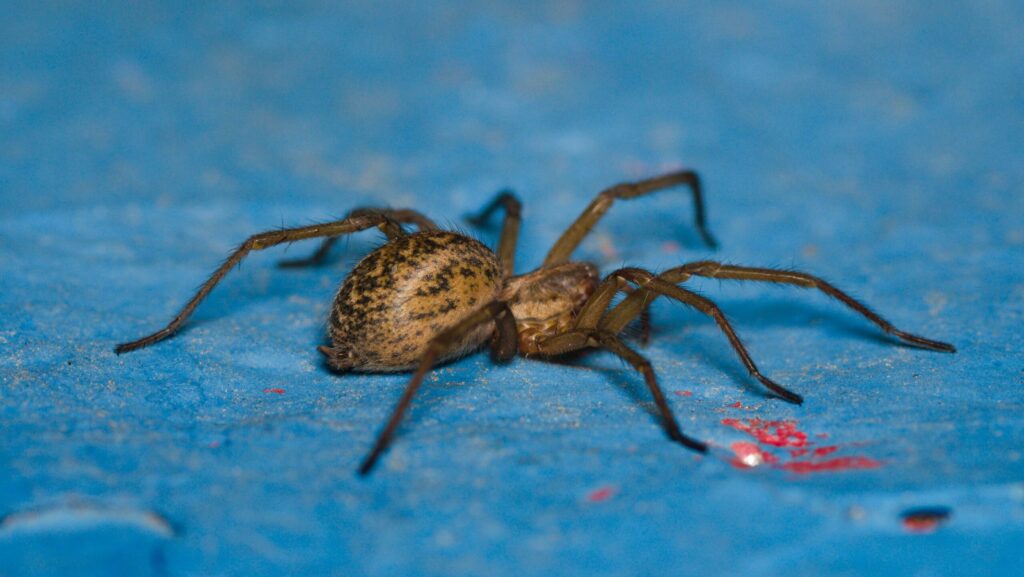
Hobo spiders (Eratigena agrestis) have a somewhat controversial reputation as venomous spiders, with recent research questioning their danger to humans. These brownish spiders feature a distinctive herringbone or chevron pattern on their abdomen, though this can be difficult to see without magnification. They measure about 1/3 to 2/3 inch in body length and have a uniform brown coloration without distinctive markings on their legs. Hobo spiders build funnel-shaped webs in dark corners, often at ground level, and are more common in the Pacific Northwest of the United States. While once thought to cause necrotic wounds similar to brown recluse bites, current scientific consensus suggests their bites may cause only minor symptoms in most cases.
Yellow Sac Spiders

Yellow sac spiders (Cheiracanthium species) are pale yellowish or greenish-white spiders measuring about 1/4 to 3/8 inch in body length. They have distinctive dark fangs and feet, with the first pair of legs typically longer than the others. Unlike web-building spiders, yellow sac spiders are active hunters that roam at night and retreat to silken sacs during the day, often constructed in ceiling corners, behind picture frames, or in folded fabrics. Their bites can be painful and may cause a stinging sensation followed by redness and swelling, though symptoms typically resolve within a few days. These spiders are frequently found indoors and may be one of the more common sources of spider bites in homes.
Wolf Spiders

While not typically dangerous to humans, wolf spiders (family Lycosidae) can deliver painful bites when threatened. These robust, ground-dwelling hunters are distinguished by their arrangement of eight eyes in three rows, with the middle four eyes forming a square. They’re typically brown or gray with various patterns and can range from 1/2 inch to over an inch in body length. Unlike most spiders, female wolf spiders carry their egg sacs attached to their spinnerets and later carry their spiderlings on their backs. Wolf spiders don’t build webs but actively hunt prey on the ground, which brings them into more frequent contact with humans. Though their venom isn’t medically significant, their large size and quick movements can make them frightening to encounter.
Web Patterns as Identification Tools
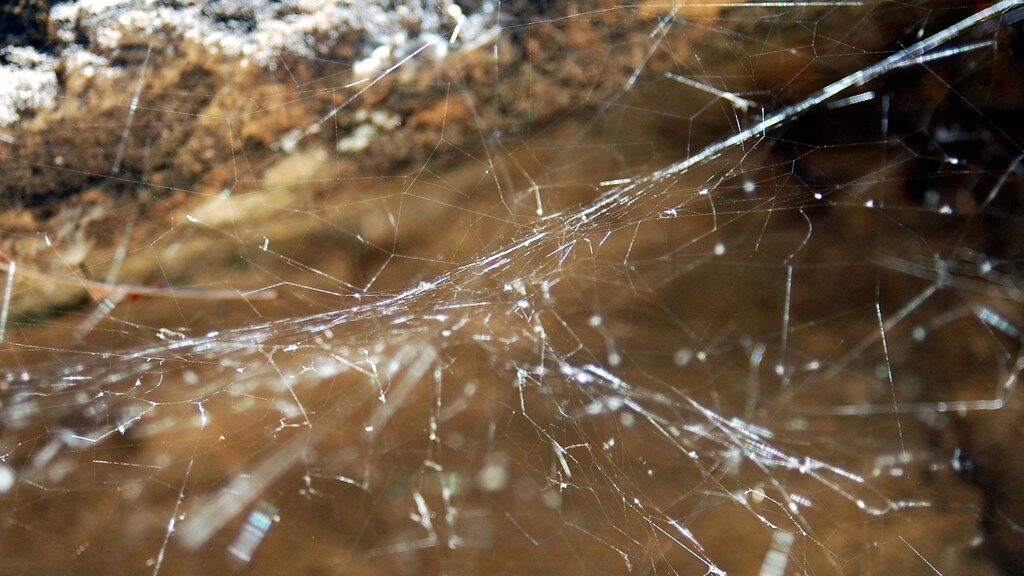
The type of web a spider constructs can provide valuable clues about its identity and potential danger. Black widows create irregular, tangled webs with no discernible pattern, often near ground level in protected locations. Brown recluse spiders build irregular, whispy webs that resemble cotton candy, typically in undisturbed areas. Funnel-web spiders, including some species of concern, create distinctive sheet-like webs with a funnel retreat where the spider hides. Orb-weavers, which are generally harmless despite their sometimes intimidating appearance, build the classic circular wheel-shaped webs that we typically associate with spiders. Learning to recognize different web types can help you identify potential problem areas in your home before directly encountering the spider itself.
Common Spider Habitats Inside Homes
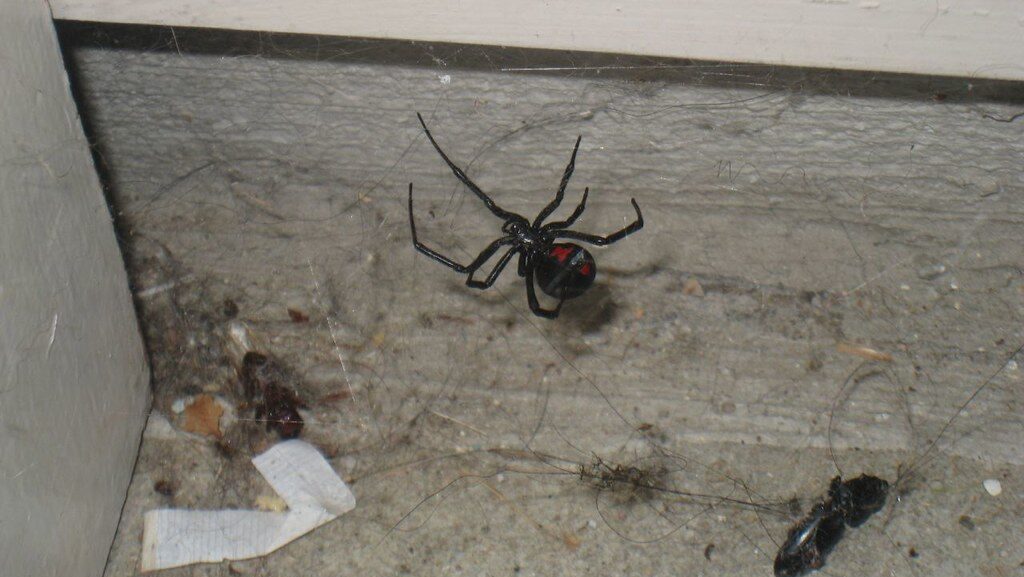
Understanding where venomous spiders prefer to live can help you focus your identification efforts and preventative measures. Black widows typically inhabit dark, undisturbed areas like crawl spaces, under furniture, inside shoes, or in cluttered storage areas. Brown recluse spiders prefer dry, undisturbed locations such as attics, closets, storage boxes, and between rarely-moved items. Yellow sac spiders often build their silk retreats in upper corners of rooms, behind picture frames, in curtain folds, or in ceiling light fixtures. Basements, garages, and rarely-used rooms provide ideal environments for many spider species, offering both darkness and a steady supply of insect prey. Checking these areas regularly with appropriate caution can help you identify potential problems before an accidental encounter occurs.
Differentiating Dangerous from Harmless Spiders
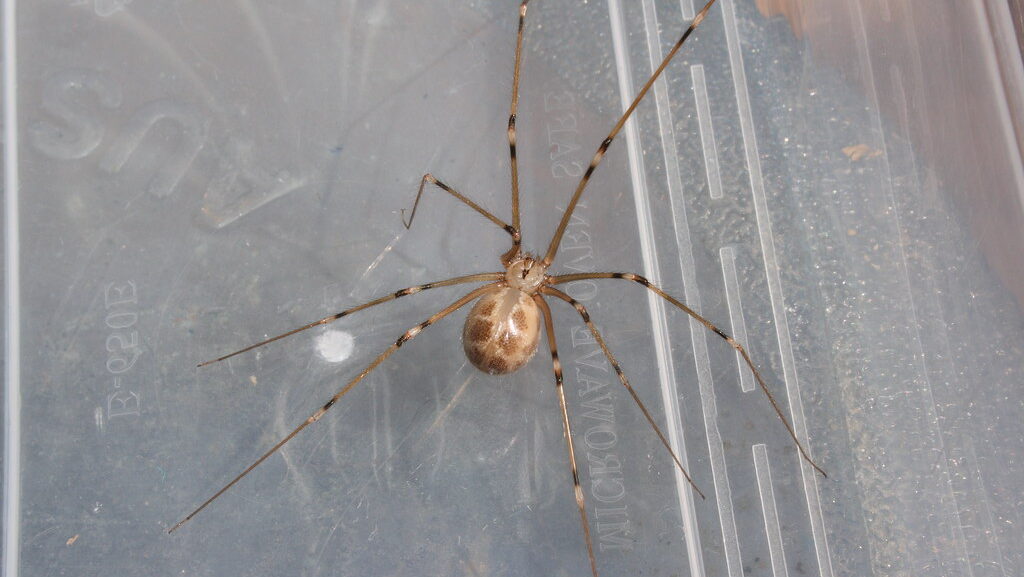
Many harmless spiders are frequently misidentified as their more dangerous lookalikes, leading to unnecessary fear and spider eradication. Common cellar spiders (often called daddy longlegs), with their small bodies and extremely long, thin legs, pose no threat to humans despite urban legends about their venom. Common house spiders (Parasteatoda tepidariorum) build cobwebs in corners but have minimal venom that isn’t medically significant. Jumping spiders, with their large forward-facing eyes and curious, almost puppy-like behavior, are completely harmless despite their sometimes startling movements. Learning to distinguish these beneficial pest-controllers from truly dangerous species can help maintain a healthy ecosystem in your home while still protecting your family from legitimate threats.
What to Do If You Find a Venomous Spider
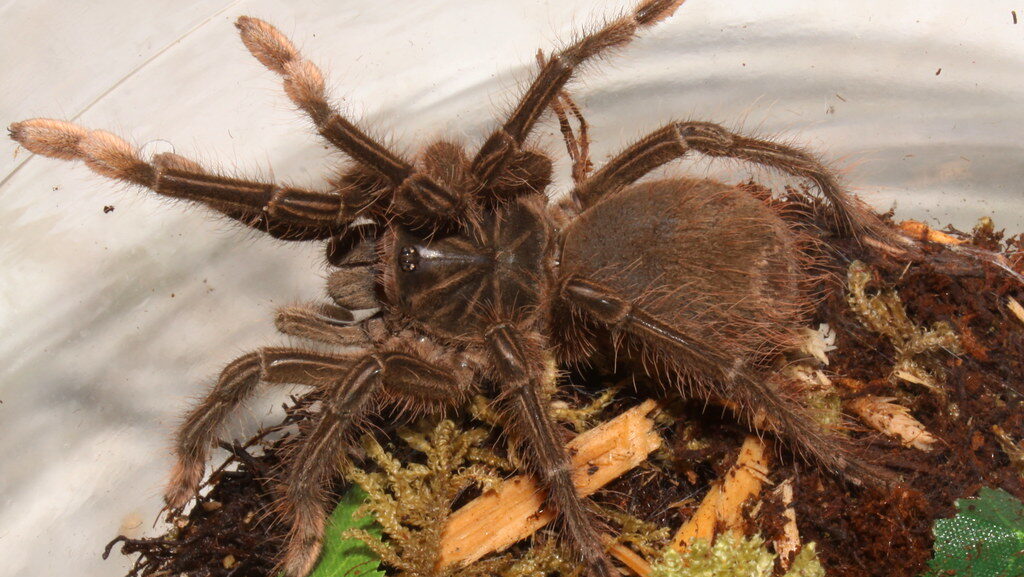
If you positively identify a venomous spider in your home, remain calm and consider your options carefully. For isolated specimens, capture-and-release is often the safest approach: place a clear container over the spider, slide a piece of paper underneath, then flip and secure the container before releasing the spider outdoors far from living areas. If you suspect an infestation, especially of black widows or brown recluse spiders, contacting a professional pest control service is advisable as these situations require specialized treatment. Never attempt to handle venomous spiders directly, even with gloves, as their fangs can penetrate many materials. Keep children and pets away from the area until the situation is resolved, and consider preventative measures to avoid future encounters.
Treating Spider Bites

If you believe you’ve been bitten by a venomous spider, take appropriate action immediately. Clean the bite area with soap and water, apply a cold compress to reduce swelling, and elevate the affected limb if possible. For suspected black widow bites, which cause intense pain and muscle cramping, seek medical attention promptly as antivenom may be necessary in severe cases. Brown recluse bites may initially be painless but develop a characteristic “bull’s-eye” pattern with a pale center surrounded by red rings; medical attention is crucial as tissue death may occur. When possible, safely capture the spider for identification by medical professionals, as this can guide treatment decisions. Remember that most spider bites heal without intervention, but those from venomous species should never be ignored.
Prevention Strategies

Preventing venomous spiders from establishing themselves in your home is far easier than dealing with them after they’ve moved in. Regular cleaning and decluttering eliminates hiding spots and disrupts web-building, making your home less appealing to spiders. Seal cracks and crevices around windows, doors, and foundations to limit entry points, and install door sweeps to prevent spiders from crawling underneath. Reduce exterior lighting that attracts insects (spider food), or switch to yellow “bug lights” that are less attractive to insects. Keep storage items in sealed plastic containers rather than cardboard boxes, especially in basements, garages, and attics where venomous species often establish themselves. Regularly inspect and shake out rarely used items like shoes, gloves, and stored clothing before use.
Myths and Misconceptions About Venomous Spiders
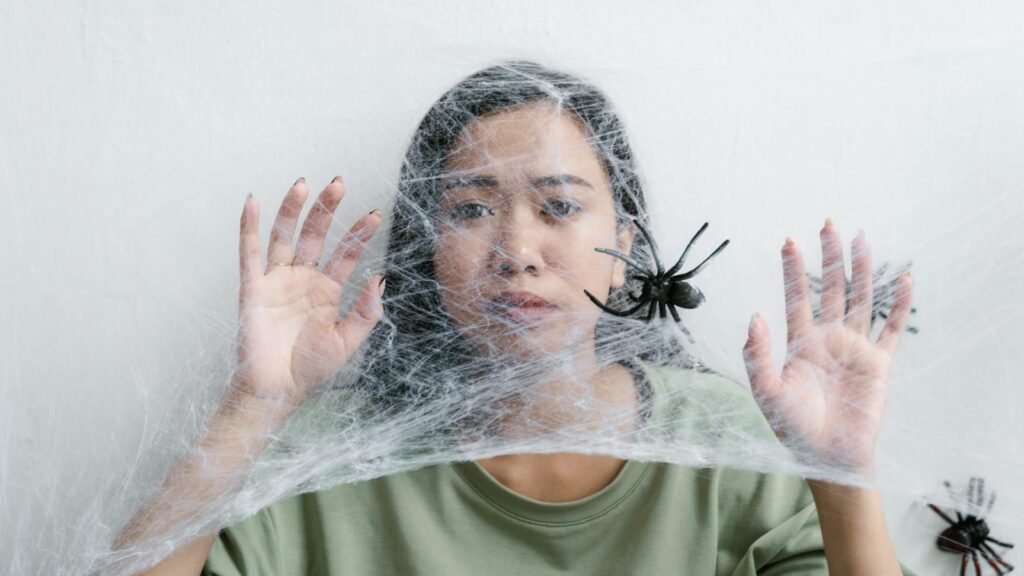
Many widespread beliefs about venomous spiders are simply untrue and can lead to unnecessary fear or inappropriate responses. Contrary to popular belief, most house spiders aren’t invasive species but have evolved to live alongside humans for thousands of years. The idea that we swallow eight spiders yearly while sleeping is completely false; spiders avoid sleeping humans as they sense the vibrations of breathing and heartbeats. Not all brown spiders are brown recluses, and these often-blamed spiders have a limited range primarily in the central and southern United States. White-tailed spiders, common in Australia and sometimes found in the U.S., have been wrongly accused of causing necrotic wounds despite scientific evidence to the contrary. Understanding these misconceptions can help reduce arachnophobia and promote more balanced approaches to spider management.
When to Call Professional Help

While most spider situations can be handled independently, certain scenarios warrant professional intervention. If you identify multiple venomous spiders in your home, particularly black widows or brown recluses, this likely indicates an established population requiring comprehensive treatment. Homes with young children, elderly individuals, or immunocompromised people may benefit from professional assessment even with smaller spider problems due to increased vulnerability to venom. If you’re unable to identify a spider but have reason to believe it may be dangerous, pest control professionals can provide expert identification and appropriate management recommendations. Professional services are also advisable if spiders persistently return despite your best prevention efforts, as this suggests hidden entry points or breeding areas that need specialized attention.
Building a Balanced Relationship with Spiders

While identifying and managing venomous spiders is important, developing a balanced perspective on these creatures benefits both humans and ecosystems. Spiders are essential predators that control pest populations, with a single spider capable of consuming hundreds of insects annually, including disease vectors like mosquitoes and flies. Most species pose absolutely no threat to humans and prefer to avoid contact whenever possible. Learning to distinguish between harmless and potentially dangerous species allows you to make informed decisions about which spiders to remove and which to leave as beneficial house guests. With knowledge replacing fear, you can approach spider encounters with confidence, protecting your family from legitimate risks while appreciating these remarkable creatures for their ecological contributions.
